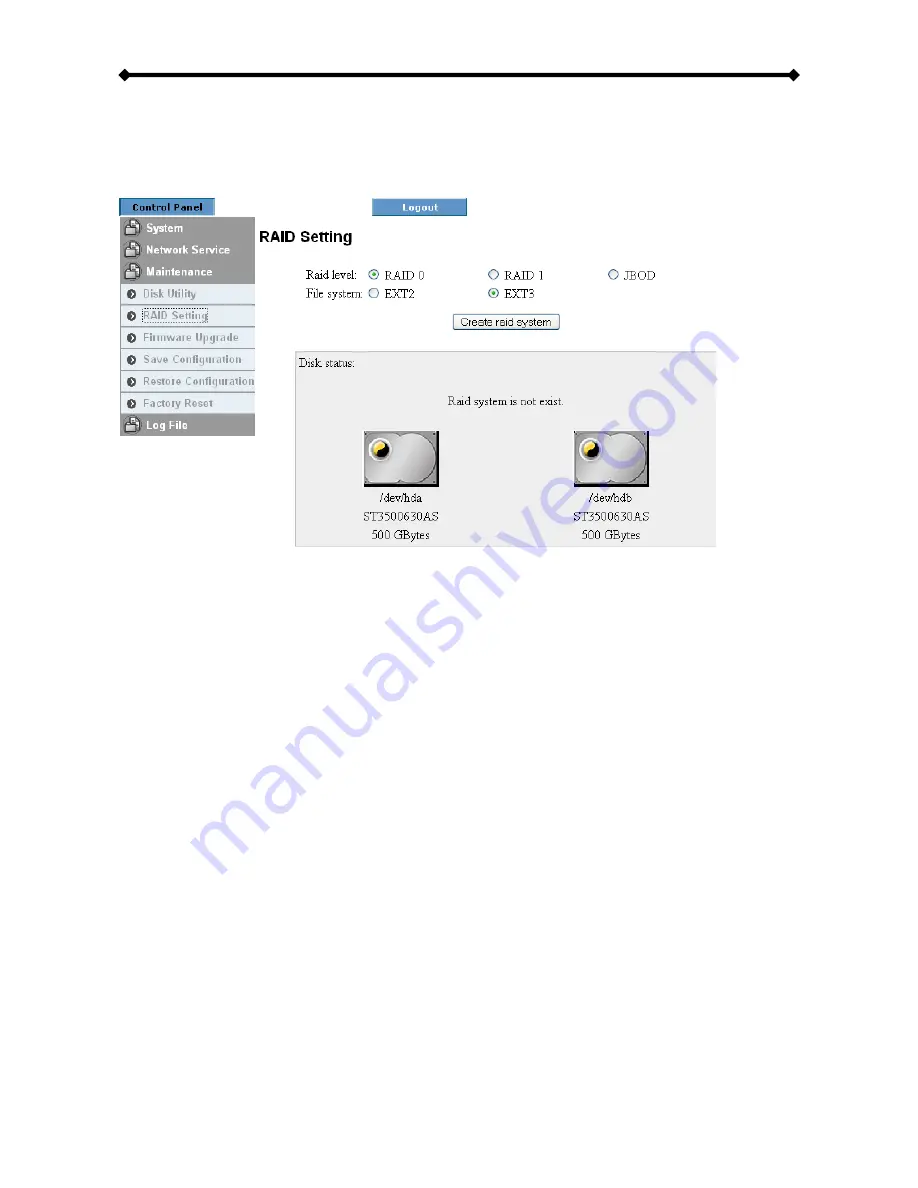
i-Stor LAN User Guide
Page 25 / Chapter 3 - Web Configuration
RAID Setting
In this section you can manage the RAID array and set up your drives. The i-Stor LAN
supports RAID 0 and RAID 1. Two hard drives of identical capacity and make are required.
If only one drive is installed, the RAID configuration will not be available.
•
RAID 0: Used where speed is the primary objective, RAID Level 0 (also called "striping")
is not redundant. This form of array splits each piece of data across both of the drives in
segments; since data is written without any form of parity data-checking, it allows for the
fastest data transfer compared to the other setups. However, if one drive becomes
damaged, the whole array can become corrupted.
•
RAID 1: This mode requires 2 identical drives to implement. A RAID 1 creates an exact
copy (or mirror) of a set of data on the second drive. This is useful when reliability and
backup are more important than data capacity. The available capacity to the user will
only be as large as a single drive but when one of the hard drives fails, it can be
replaced and the data rebuilt.
•
JBOD: Used to combine two hard drives of different capacity and create one single
larger hard drive. If you are using two identical drives, we recommend using RAID 0
instead.
Note: Creating the RAID system will take a while, depending on the drive capacity. Do not
turn off the power or interrupt the system in any other way during this process! We
recommend using the EXT2 file system for optimum performance and functionality.
Changing the RAID setup will require you to re-format the drives. Make sure you backup
all data before doing so!
















































